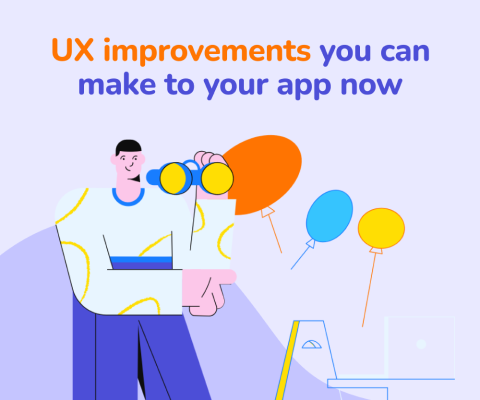December 17th, 2025, posted in for_founders
by Adelina
For businesses looking to stand out, focusing on customer-centric product development is no longer optional—it’s essential. By placing the needs and preferences of customers at the forefront, companies can turn everyday users into loyal advocates. But what does it really take to make the customer the true driver of innovation?
In this article, we’ll explore the foundations of customer-centric product development, why it’s a game-changer, and how leading brands are using this approach to not only meet but exceed customer expectations.
Understanding What Customers Really Want
Customer-centric product development starts with a simple but powerful concept: knowing your customers inside and out. It’s not just a one-time activity, but an ongoing conversation that runs through every phase of the product journey. The goal is to listen, adapt, and evolve in real-time with your audience’s changing needs.
Think of it like a partnership—your product grows alongside your customers. Their feedback becomes your blueprint for success, shaping product features and fine-tuning the experience to align with what they actually want.
The Building Blocks of Customer-Centric Product Development
- Customer Empathy
Understanding your customers goes beyond functional needs—it’s about knowing their struggles, desires, and behaviors. Companies like Apple don’t just create products; they tap into their users' everyday experiences, solving real-world problems with precision. The iPhone is a prime example—its success wasn’t just due to sleek design but because it constantly evolved based on user feedback. Apple’s deep connection with their users ensures that every release feels tailored and personal.
- Iterative Feedback Loops
Continuous improvement is a cornerstone of customer-centricity. Products that thrive are those that never stop evolving. By creating iterative feedback loops, companies can launch, learn, and adjust based on real-world insights, ensuring that they stay relevant.
A great example is the gaming industry, where developers like those behind Minecraft release early versions of their games to gather community input. Players aren’t just customers—they're collaborators. Through this ongoing dialogue, Minecraft has remained a dynamic and engaging platform for millions.
- Data-Driven Decisions
Customer-centric development isn’t just about gut feelings—it's grounded in data. Analyzing real customer behavior allows businesses to make informed choices and predict trends.
Take Amazon’s recommendation engine, for instance. By leveraging data on user preferences and past actions, Amazon tailors its shopping experience to each individual. It’s not just a guessing game—it's data science in action, driving both engagement and loyalty.
- Agile Methodologies
Agile methodologies are another powerful tool in the customer-centric toolkit. They empower businesses to quickly iterate, responding to feedback with lightning speed. Instead of waiting for a product to be "perfect," companies release a minimum viable product (MVP) and refine it based on customer input.
Spotify is a great example of this approach. They frequently release new features, gather user insights, and improve based on real usage, ensuring their platform is always aligned with the needs of their listeners.
- Cross-Functional Collaboration
A truly customer-centric approach brings every department into the process. Product teams, marketers, designers, and customer support all contribute to ensuring the final product is not only functional but delightful.
Tesla is a leader in this area. Their success is built not just on technological innovation but on a collaborative culture that includes every part of the organization. The result? Electric vehicles that don’t just look great but also deliver a top-notch user experience.
Why It Matters for Businesses
- Enhanced Customer Satisfaction
When a product is designed with the user in mind, it becomes more than just another offering on the market. It becomes a solution that customers value and trust. The outcome? Higher customer satisfaction and lasting relationships.
Companies that truly listen to their users—like Apple—don’t just meet expectations; they exceed them, building loyal customer bases that keep coming back for more.
- Reduced Time to Market
Customer-centric product development often accelerates the go-to-market process. By focusing on what matters most to customers, businesses can avoid unnecessary features and wasted resources, delivering faster and more effectively.
Google’s constant updates to its search engine algorithms illustrate how this approach can be a game-changer. Rapid iteration based on user behavior allows Google to stay at the top, ensuring every search delivers the best possible result.
- Improved Product Adoption
When products are designed with users' needs front and center, adoption becomes effortless. The product becomes part of their daily routine, seamlessly fitting into their lives.
Slack revolutionized workplace communication by focusing on how teams collaborate, creating a tool that people actively want to use. Their user-centric approach helped them gain traction quickly and become an indispensable part of modern workflows.
- Brand Loyalty and Advocacy
Customer-centric development fosters deeper connections between brands and their users. When customers feel that their voices are heard and their needs are prioritized, loyalty naturally follows.
Take Apple again—its commitment to delivering exceptional user experiences has cultivated one of the most loyal customer bases in history. This brand loyalty leads to organic advocacy, as satisfied customers spread the word, becoming brand ambassadors without even realizing it.
Customer-centric product development is more than just a strategy—it’s a mindset. By integrating customer feedback at every stage, businesses can innovate with confidence, adapt to changing market demands, and build products that resonate deeply with users.
In a world where customers expect more than just good products, they want meaningful experiences. The companies that will lead the future are those that treat their customers as co-creators, partnering with them to deliver value, drive growth, and ensure long-term success.
Ready to take your product development to the next level? Book a free UI/UX assessment with us today and discover how a customer-first approach can transform your design and boost user engagement.

















